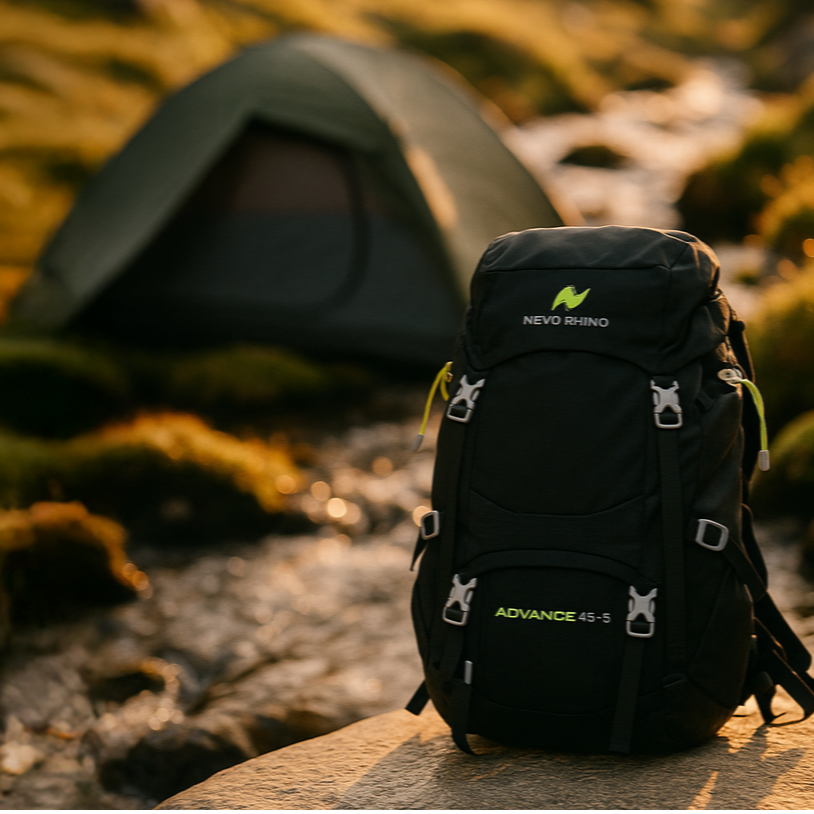
Camping in Bad Weather: What to Know (And How to Stay Safe and Dry)
Share
Blue skies aren’t guaranteed. And any seasoned camper will tell you: bad weather isn’t an if, it’s a when. Whether it’s rain, cold, wind, or unexpected storms, how you prepare can make or break your trip.
If you’re a beginner camper, bad weather might sound like a reason to cancel. But with the right mindset and the right gear, you can still have a great time outdoors, even if the clouds roll in.
Here’s what you need to know to camp confidently, even when Mother Nature throws you a curveball.
🌧️ 1. Understand the Types of Bad Weather
Not all “bad weather” is the same. Know what you’re dealing with, and you’ll know how to handle it.
Common Weather Hazards for Campers:
- Rain: Can soak gear, ruin firewood, and cause hypothermia if unprepared
- Wind: Can collapse tents or cause falling branches
- Cold: Increases risk of hypothermia and poor sleep
- Thunderstorms: Dangerous if camping in exposed or high areas
- Snow (in shoulder seasons): Unexpected and potentially dangerous if your gear isn’t rated for it
Always check the forecast, but also know that mountain and forest weather can change rapidly.
🏕️ 2. Choose Your Campsite Wisely in Bad Weather
In rough conditions, location matters even more.
Avoid:
- Low ground where water can pool
- Exposed ridgelines (wind and lightning risk)
- Under dead trees or branches ("widowmakers")
Look For:
- Slightly elevated, well-drained ground
- Natural windbreaks (bushes, boulders, or trees)
- Solid ground for your tent stakes to hold
Pro Tip: Always bring a groundsheet or footprint under your tent. It adds insulation and prevents water from seeping in.
🌬️ 3. Gear That Keeps You Dry and Warm
This is where preparation pays off. You don’t need fancy gear, just the right gear:
Must-Haves for Wet or Cold Weather:
- Rainfly and tent with sealed seams
- Waterproof stuff sacks or dry bags
- Packable rain jacket and rain pants
- Warm, non-cotton layers (fleece, wool, or synthetic)
- Extra socks and a hat
- Bivy sack or emergency blanket (backup warmth)
Don’t forget: Wet cotton is a killer. It gets cold and stays cold. Pack synthetics or wool every time.
🔥 4. Cooking and Fires in Bad Weather
Cooking in the rain or wind is tricky, but not impossible.
- Use a lightweight camp stove with a windscreen (like the one in the Seventh Step Kit)
- Store your dry firewood or kindling in a waterproof bag
- Cook under a tarp shelter or vestibule (never inside your tent!)
- Bring high-calorie foods — your body burns more energy staying warm
🥣 Simple, warm meals (like oats, ramen, or instant chili) go a long way when it’s wet and cold.
🧠 5. Know When to Bail (And That It's Okay)
Sometimes the safest move is to call it early — and that’s not a failure, it’s survival wisdom.
Signs it’s time to pack up:
- Gear is soaked beyond recovery
- You’re shivering and can’t warm up
- Forecasts predict worsening conditions (like snow or lightning)
- Your shelter is compromised
Always have an exit plan — and let someone know where you're camping.
Don’t Wait for Perfect Weather
The outdoors isn’t about perfection — it’s about resilience, growth, and experience.
The truth is: some of your most memorable trips will be the ones where it rained, the fire struggled, but you made it through warm, dry, and proud.
→ Get the Starter Kit
Take the guesswork out of gear and camp prepared — no matter the forecast.












